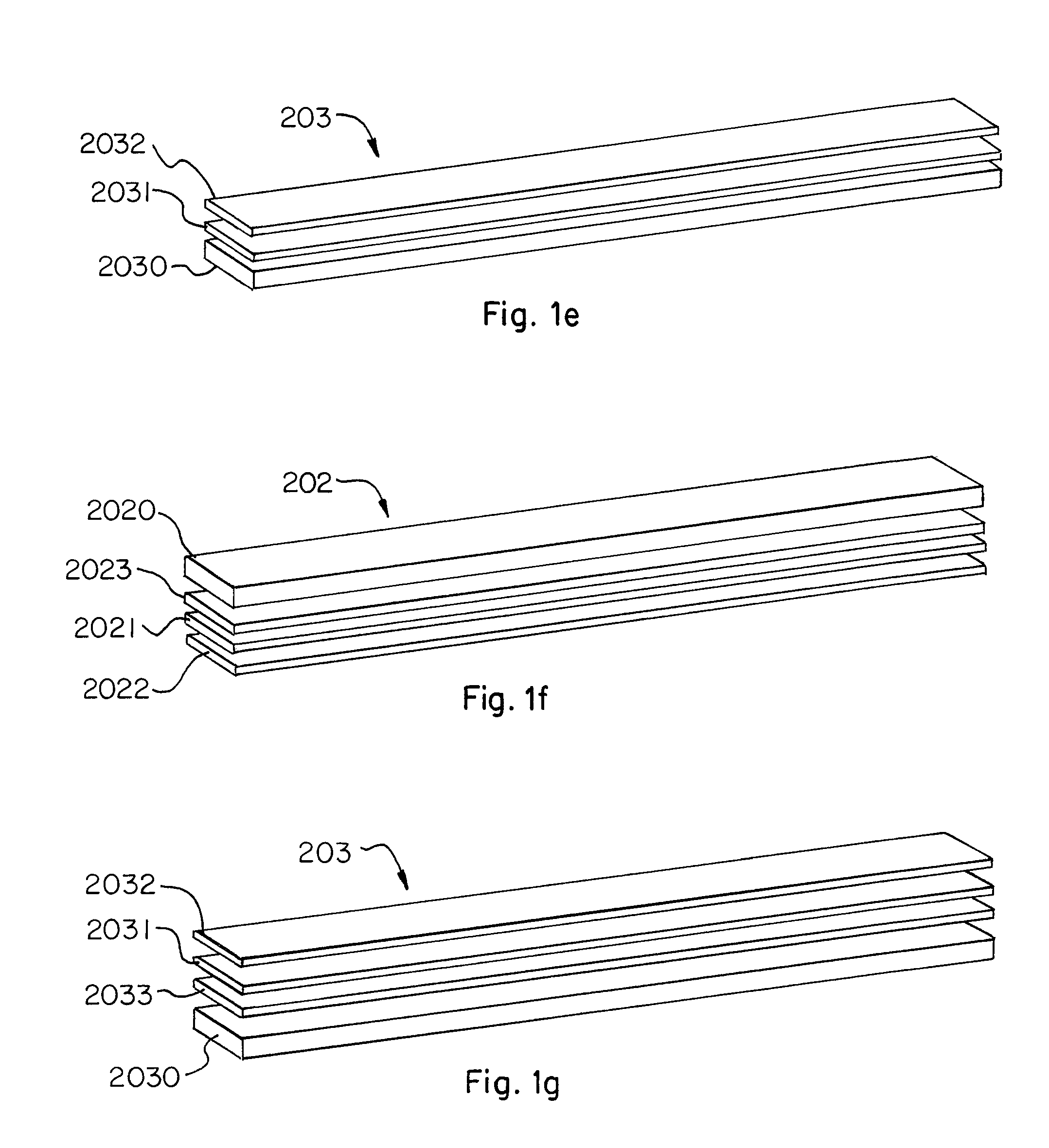Closed Cell Materials
a closed cell, material technology, applied in the field of fabrics, can solve the problems of significant covering of the surface of the substrate, significantly lower moisture vapor permeability of the coated substrate than the starting substrate, undesirable in apparel or outdoor equipment products, etc., and achieve the effect of reducing heat loss and increasing thermal resistan
- Summary
- Abstract
- Description
- Claims
- Application Information
AI Technical Summary
Benefits of technology
Problems solved by technology
Method used
Image
Examples
Embodiment Construction
[0027]As used herein, the term “metal” includes metal alloys as well as metals.
[0028]In one embodiment shown in FIG. 1, outer layer composite 202 is made up of a first substrate layer 2021 and optional second substrate layer 2020 and metal layer 2022 as shown in FIG. 1b. Inner layer composite 203 is made up of a first substrate layer 2031 and optional second substrate 2030 as shown in FIG. 1c. Said inner layer may also optionally feature a metal layer 2032 as shown in FIG. 1e. The closed cell foam 201 is sandwiched between outer layer composite 202 and inner layer composite 203 as shown in FIG. 1d. The closed cell foam 201 is optionally perforated or embossed.
[0029]In another embodiment of the present invention, outer layer 202 features one or more additional substrate layers 2023 as shown in FIG. 1f. In another alternative embodiment, inner layer 203 features one or more additional substrate layers 2033 as shown in FIG. 1g.
[0030]In an alternative embodiment outer layer 202 is lami...
PUM
| Property | Measurement | Unit |
|---|---|---|
| thickness | aaaaa | aaaaa |
| thickness | aaaaa | aaaaa |
| thickness | aaaaa | aaaaa |
Abstract
Description
Claims
Application Information
 Login to View More
Login to View More - R&D
- Intellectual Property
- Life Sciences
- Materials
- Tech Scout
- Unparalleled Data Quality
- Higher Quality Content
- 60% Fewer Hallucinations
Browse by: Latest US Patents, China's latest patents, Technical Efficacy Thesaurus, Application Domain, Technology Topic, Popular Technical Reports.
© 2025 PatSnap. All rights reserved.Legal|Privacy policy|Modern Slavery Act Transparency Statement|Sitemap|About US| Contact US: help@patsnap.com



